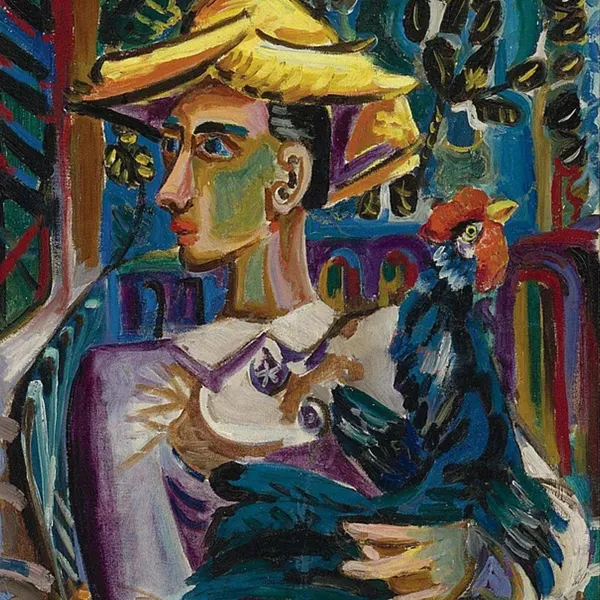Bernard Buffet was a French painter known for his expressive style and somber palette. Though he was initially associated with the Expressionist movement, Buffet later developed his own unique style that earned him critical acclaim. Here are five essential works by Bernard Buffet.
The Old Clown
In "The Old Clown", Bernard Buffet portrays a traditional circus clown in a way that is both realistic and sympathetic. The clown is shown as a tired and world-weary figure, with sagging features and a drooping mouth. Despite this, he still retains a certain dignity and pathos. The painting is executed in Buffet's characteristic style, with thick, bold strokes of paint. The overall effect is one of melancholy and nostalgia.
Buffet was fascinated by the circus and its performers, and he often used them as subjects for his paintings. "The Old Clown" is one of his most famous works, and it captures the essence of the clown's tragicomic figure. The painting has been interpreted as a metaphor for the human condition, with the clown's weary expression symbolizing the weariness of life. Whatever the interpretation, "The Old Clown" is a moving and memorable work of art.
The Circus
The French painter Bernard Buffet was known for his expressive, sometimes grotesque depictions of everyday subjects. His work was often compared to that of his contemporary, Jean Dubuffet. Buffet's paintings often featured circus performers, clowns, and other members of the circus.
Buffet was born in Paris in 1928. His parents were both art dealers. Buffet began painting at a young age and had his first solo exhibition when he was 18. His work was immediately popular with the public and critics alike.
Dubuffet was not the only artist Buffet was compared to; his work was also said to resemble that of Pablo Picasso and Georges Rouault. Buffet's use of black and white, as well as his distorted figures, set him apart from other painters of his time.
Despite his success, Buffet experienced periods of depression and anxiety throughout his life. In 1968, he attempted suicide. He continued to paint until his death in 1999.
The Painter and His Model
Is one of Bernard Buffet's most famous paintings. The painting shows a painter at work in his studio, with his model standing nearby. The painting is set in a realistic style, with the painter's brushstrokes visible on the canvas. The model is shown in a realistic way, but with a hint of mystery. She is looking at the painter with a small smile, as if she knows something he does not. The painting is a portrait of the artist at work, but it is also a portrait of the model, who is shown as a complex and intriguing person.
The Death of a Clown
Bernard Buffet uses a somber palette and distorted figures to depict the final moments of a clown's life. The painting shows the clown lying on the ground, his face hidden by his hands. His body is twisted and his clothes are in disarray. The clown's death is a metaphor for the death of laughter and joy. The painting is a reminder that life is full of pain and suffering, and that death is inevitable.
The Suicide
Bernard Buffet uses a limited color palette to create a sense of despair and loneliness. The painting depicts a figure sitting in a chair with a noose around their neck, surrounded by a barren room. The muted colors and lack of detail in the figure and the room create a sense of emptiness and despair. The painting is a powerful reminder of the loneliness and despair that can lead to suicide.
